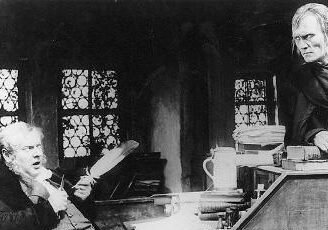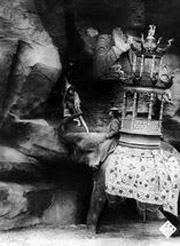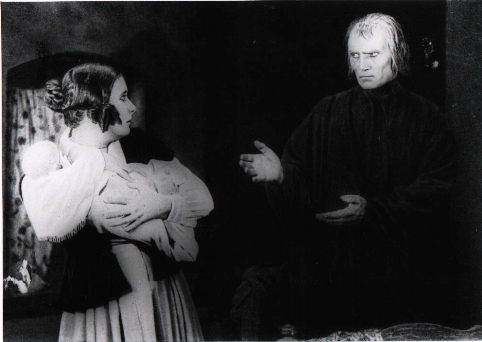Short and Sweet
Romantic mood and resignation characterize this novella-like film, in which Death has grown weary of his role and almost longs to be “defeated” by a young girl. Equally impressive is the entire “main plot”: the scene set in the romantically winding German town with its partly quirky characters, and the scene in the majestically dark hall of life lights.
Music
The music for organ, marimba, and percussion (alternatively: piano, marimba, and percussion) was commissioned by the festival “Silent Film Live – 100 Years of Cinema” in 1995 in Leipzig, paying homage to the great tradition of silent film music from the 1920s in Germany.
It represents a contemporary combination of film music techniques from the silent film era, involving both compilation (the use of existing works deemed suitable or adapted) and composition (the creation of new music tailored to specific needs).
Central themes are based on compositions by P. Tchaikovsky and M. Mussorgsky, rooted in the late bourgeois artistic perspective of the film.
However, the new compositions also evoke the spirit of contemporary silent film music from the early 20th century. The music aims to sound as it might have in a cinema in 1921, bringing the film’s qualities to life musically, infusing the silent performance with acoustic vitality.
Like in the silent film era, the music is peppered with thematic references (for example, the musical motif “Vöglein” by Edvard Grieg when a chirping bird appears on screen), many of which come from the famous collection “Motion Picture Moods for Pianists and Organists” from 1924. Since a large portion of these musical quotes may not be easily decoded by cinema-goers in the year 2000 (thus losing a significant part of their impact), I decided to place more contemporary musical references in selected spots. These references still resonate today, alongside their original parameters of rhythm, melody, tempo, timbre, and volume, adding a particular wit through the audience’s own associative connections—this aligns with the historical film music technique of “film running.”
The program has so far been highly successful, having been performed 29 times in churches across Germany as well as in cinemas, film museums, and more both domestically and internationally, with additional events planned.
Register
Fritz Lang was born on December 5, 1890, in Vienna and died on August 2, 1976, in Los Angeles.
He initially studied architecture and painting, and after World War I, he began writing screenplays that were filmed by Joe May and Otto Rippert. Lang made his directorial debut in 1919 with the film Halbblut, followed by numerous films, many of which have become classics in film history.
In the 1920s, Lang was one of the leading German directors. He emigrated in 1933 when Goebbels offered him a position as a sort of “Reich Film Intendant,” moving through France and England to the USA, where he began a second career.
Ornamental style and architectural structure characterize his early German films: massive buildings, sophisticated lighting effects, and looming shadows often dominate the scenes, portraying humanity primarily as victims of fateful entanglements. Captured by the camera in a labyrinth of strict lines, characters are confronted with the monumental nature of vast decorations or are lost among faceless masses.
Like few other filmmakers, Lang sensed the impending problems of his time as early as the 1920s. His tendency to depict these issues intuitively rather than critically led to misunderstandings among some critics—even today—who believe he identified with these currents, especially since his wife and long-time screenwriter Thea von Harbou quickly adapted to the new circumstances after 1933.
In Hollywood, Lang primarily directed “action films,” and his attempt to regain a foothold in German cinema in the late 1950s failed.
Selected Filmography:
- 1919: Halbblut
- 1921: Der müde Tod
- 1922: Dr. Mabuse, der Spieler
- 1924: Die Nibelungen: Siegfrieds Tod; Die Nibelungen: Kriemhilds Rache
- 1927: Metropolis
- 1928: Spione
- 1929: Frau im Mond
- 1931: M
- 1936: You Only Live Once
- 1942: Hangmen Also Die
- 1944: The Woman in the Window
- 1953: The Big Heat
- 1958: Der Tiger von Eschnapur; Das indische Grabmal





